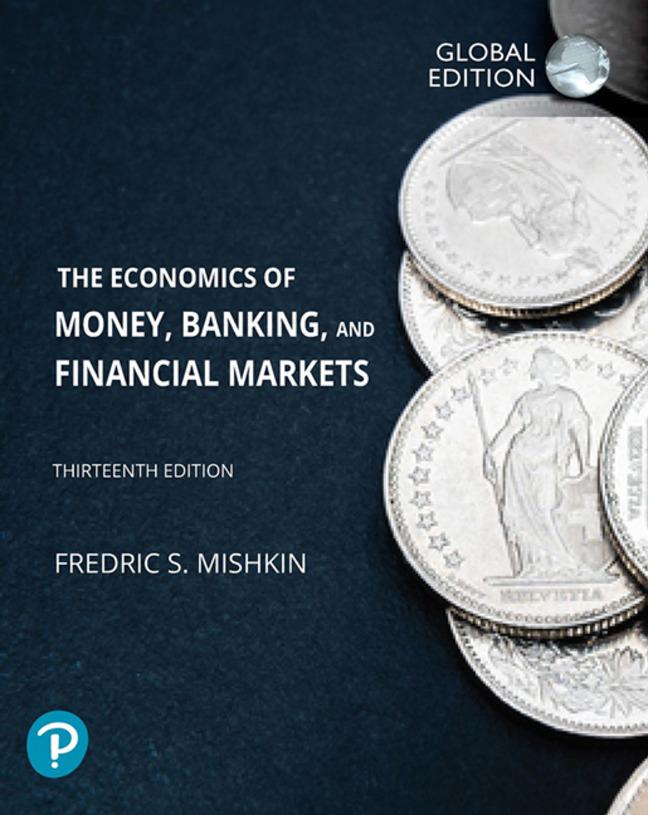Teach your students the principles of economics and give them a practical foundation The Economics of Money, Banking and Financial Markets, 13th edition, teaches your students basic economic principles and shows them how to apply them in their professional and personal lives with a flexible teaching structure. This title is available with MyLab®.
Gain a strong foundation in the principles of economics and learn to apply them successfully in real-life scenarios. Economics of Money, Banking and Financial Markets
, 13th edition, Global Edition, by Frederic S. Mishkin, brings a fresh perspective to the major questions surrounding financial policy. Drawing on his experience as former Governor of the Federal Reserve, Mishkin brings a unique viewpoint to the subject. The text guides you with helpful insights through topics covering the monetary policy process, the regulation and supervision of the financial system, and the internalisation of financial markets.
The 13th edition comes packed with new examples, additional insight boxes and revised in-chapter content, making it an excellent aid for courses on money and banking or general economics.
This authoritative text will ensure you are equipped with the tools to make successful decisions in both your personal and professional life.
Pair this text with MyLab
®
Economics
MyLab is the teaching and learning platform that empowers you to reach every student. Combining trusted content with digital tools, MyLab Economics personalises the learning experience and improves student results.
If you would like to purchase the physical text and MyLab
®
Economics, search for:
9781292409603Economics of Money, Banking and Financial Markets, Global Edition, 13thEdition plus MyLabEconomicswith Pearson eText.
Package consists of:
9781292409481 Economics of money main title 13
th
Edition
9781292409504 MyLab
®
Economics
9781292409580 Economics of money 13
th
Edition Pearson eText
MyLab
®
Economics is not included.
If MyLab is a recommended component of the course, ask your instructor for the correct ISBN. MyLab should only be purchased when required. Instructors, contact your Pearson representative for more information.
This title is a Pearson Global Edition. The Editorial team has worked with educators around the world to include content relevant to students outside the United States.
Inhaltsverzeichnis
Brief Contents PART I: Introduction
- Why Study Money, Banking, and Financial Markets?
- An Overview of the Financial System
- What Is Money?
PART II: Financial Markets
- The Meaning of Interest Rates
- The Behavior of Interest Rates
- The Risk and Term Structure of Interest Rates
- The Stock Market, the Theory of Rational Expectations, and the Efficient Market Hypothesis
PART III: Financial Institutions
- An Economic Analysis of Financial Structure
- Banking and the Management of Financial Institutions
- Economic Analysis of Financial Regulation
- Banking Industry: Structure and Competition
- Financial Crises in Advanced Economies
- Financial Crises in Emerging Market Economies
PART IV: Central Banking And The Conduct Of Monetary Policy
- Central Banks
- The Money Supply Process
- Tools of Monetary Policy
- The Conduct of Monetary Policy: Strategy and Tactics
PART V: International Finance and Monetary Policy
- The Foreign Exchange Market
- The International Financial System
PART VI: Monetary Theory
- Quantity Theory, Inflation, and the Demand for Money
- The IS Curve
- The Monetary Policy and Aggregate Demand Curves
- Aggregate Demand and Supply Analysis
- Monetary Policy Theory
- The Role of Expectations in Monetary Policy
- Transmission Mechanisms of Monetary Policy
Additional Chapters in Pearson Pearson Mylab Economics
- Nonbank Finance
- Financial Derivatives
- Conflicts of Interest in the Financial Services Industry













